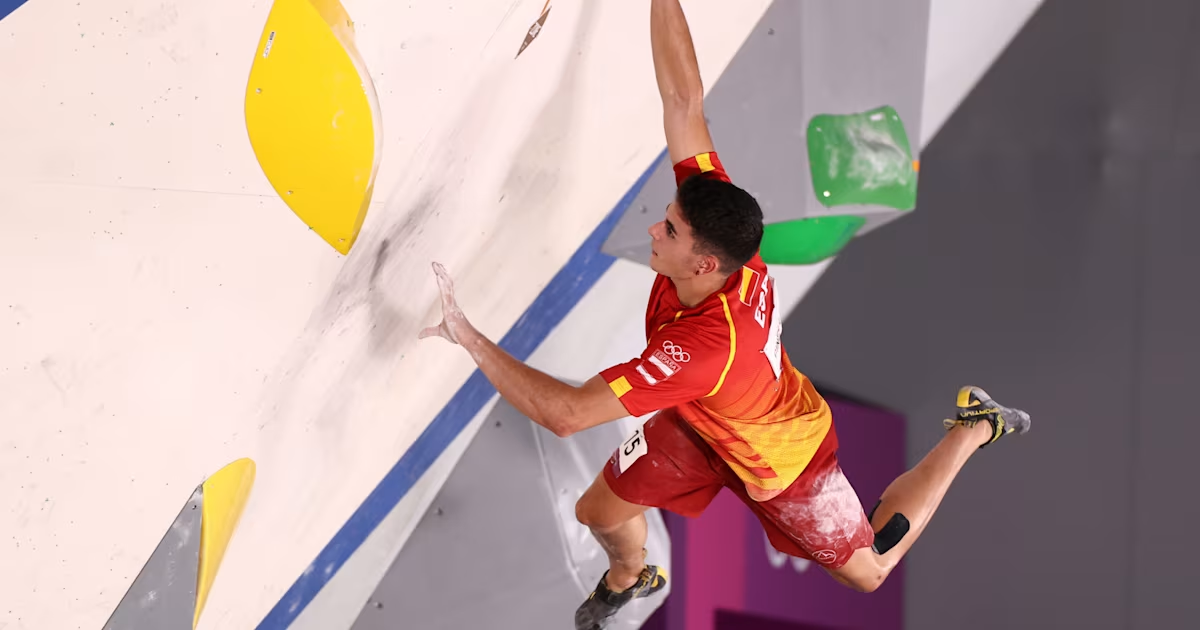Key Facts
Introduction: The Evolution of Sport Climbing in the Olympics
Sport climbing combined Olympics made a dynamic debut at the Tokyo Games in 2021. This significant addition to the Olympic roster, following its introduction at the Buenos Aires Youth Olympic Games in 2018, reflects a broader trend of incorporating urban sports to engage younger audiences. With sport climbing set to continue in the Los Angeles 2028 Summer Olympics, its inclusion highlights the sport’s growing appeal and the Olympic commitment to diversifying athletic disciplines.

The Structure of Olympic Sport Climbing
Olympic sport climbing combines three exciting disciplines: bouldering, lead, and speed. Each discipline brings its own set of challenges and rewards, contributing to the sport’s overall thrill.
Bouldering: Climbers ascend a 4.5-meter wall without ropes, aiming to reach the top in as few attempts as possible within a set time limit. Scoring is based on progress through various zones on the wall and reaching the top hold. A perfect round can earn up to 100 points.
Lead: In this discipline, climbers strive to ascend as high as possible on a 15-meter wall within six minutes. Points are awarded for successfully holding each climbing hold, with partial points for attempted but not fully secured holds.
Speed: Speed climbing is a race against the clock up a 15-meter wall with a five-degree incline. The fastest climbers in this one-on-one competition advance through elimination rounds, with top athletes reaching the top in under six seconds for men and under seven seconds for women.
Changes from Tokyo 2021
Since its debut at the Tokyo Games, sport climbing has undergone significant changes in format and scoring. One of the most notable changes is the separation of speed climbing into its own event. In Tokyo, the scores from all three disciplines were multiplied to determine the final score. This format has been updated to allow climbers to focus on their specialties, thereby enhancing the competitive aspect of each discipline.
In the current format, the combined event includes bouldering and lead, with a new scoring system that awards up to 200 points. In bouldering, climbers earn points by advancing through various zones on the wall and reaching the top hold, with deductions for attempts. A perfect round, where climbers flash all four boulder problems, earns 100 points. In lead, climbers score by successfully holding up to 40 holds, with points increasing as they climb higher. Partial points are awarded for moves toward the next hold, even if the hold is not securely grasped.
Record-Breaking Performances
The Paris Olympics witnessed a remarkable feat in the sport climbing world. Sam Watson, an 18-year-old climber from Texas, set a new world record in speed climbing, scaling the 15-meter wall in an astonishing 4.75 seconds. This incredible performance has set a new benchmark in the sport and heightened anticipation for future competitions. Watson’s achievement not only underscores the intense athleticism required for speed climbing but also serves as an inspiration for aspiring climbers worldwide.

Competition Structure and Scoring
The competition structure for Olympic sport climbing is designed to showcase the diverse skills of the athletes and ensure a thrilling spectator experience. In the combined event of bouldering and lead, 20 men and 20 women compete. For speed climbing, 14 men and 14 women participate, with each athlete performing two speed runs on different walls. Their fastest time determines their ranking, which in turn sets the matchups for the elimination rounds.
Bouldering and Lead Scoring: In bouldering, climbers advance through zones to score points, with a maximum of 100 points available. Points are deducted for failed attempts, encouraging climbers to balance speed and precision. In lead climbing, points are awarded for each hold successfully grasped, with additional points for attempting the next hold. This system rewards both the height reached and the effort involved in progressing upward.
Speed Climbing: In speed climbing, athletes perform two runs, and their fastest time determines their ranking. The top climbers then compete in one-on-one elimination rounds, racing to the top of the 15-meter wall. This format ensures that only the fastest and most focused climbers advance, making for an electrifying competition.
Conclusion
Sport climbing’s inclusion in the Olympics has brought a new level of excitement and youth engagement to the Games. With its unique combination of speed, strategy, and strength, the sport continues to evolve and captivate audiences worldwide. The changes in competition format and scoring have enhanced the competitive experience, allowing athletes to showcase their specialties. As the sport prepares for the Los Angeles 2028 Summer Olympics, the future of Olympic sport climbing looks brighter than ever, promising even more thrilling performances and inspiring achievements.
To read more about sports click here

Very good content